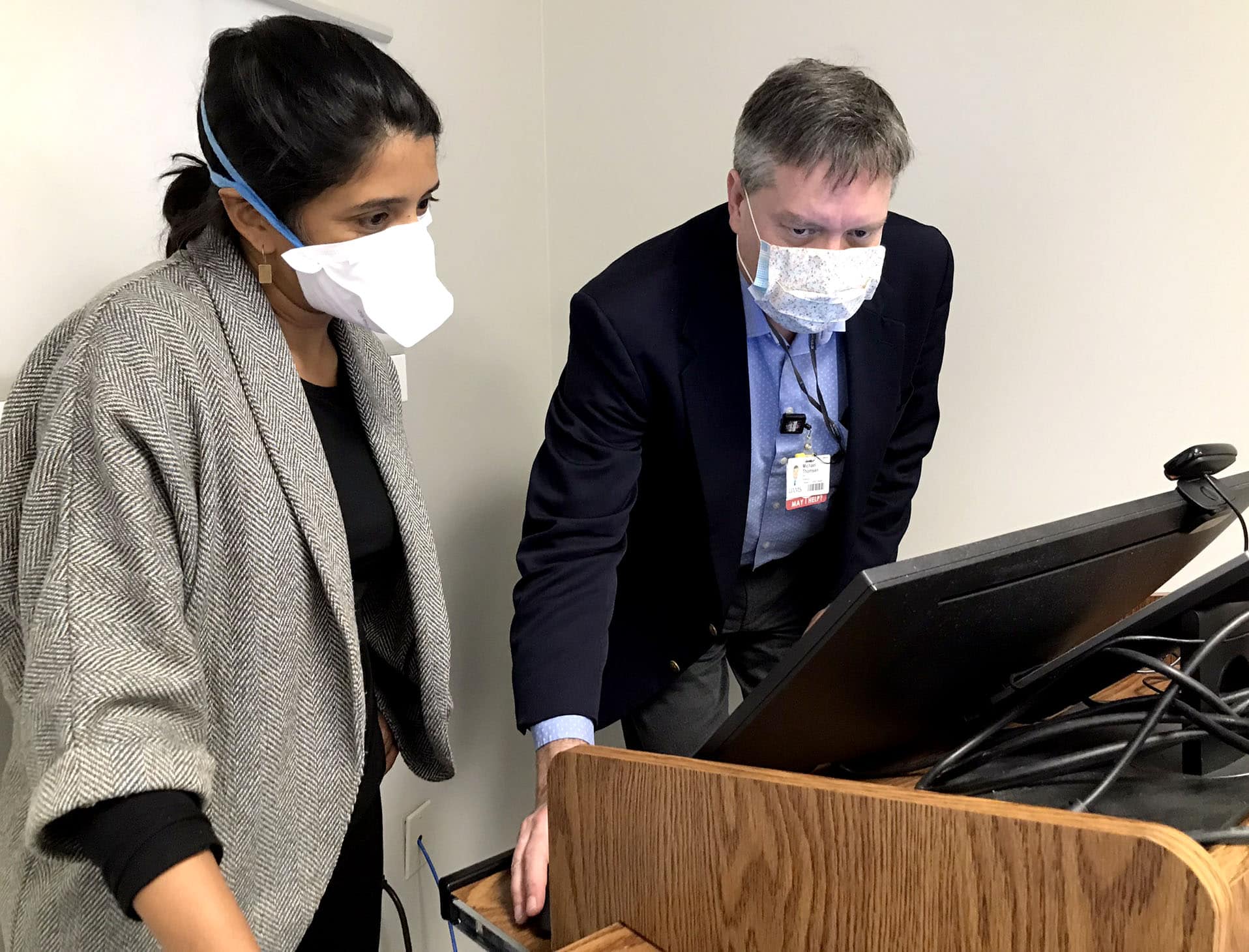UAMS Joins Community Collaboration to Create Green Spaces at Little Rock Elementary Schools
| The University of Arkansas for Medical Sciences (UAMS) Fay W. Boozman College of Public Health has received funding from the National Institutes of Health (NIH) to support its role in a collaboration to improve school playgrounds in Little Rock.
Year one of the 4-year (NIH) grant is for $389,847. Funding for the following years will be determined by the overall performance of the program.
“This is a great opportunity and speaks to the importance of the work being done to improve schools in our city,” said Michael Thomsen, Ph.D., professor in the college’s Health Policy and Management Department who holds the Governor Sidney S. McMath Endowed Chair in Obesity Prevention.
The Little Rock Green Schoolyard Initiative is a partnership between the City of Little Rock and the Little Rock School District (LRSD). It is receiving technical assistance from the Children & Nature Network. UAMS joined the effort last year and will be studying how green schoolyards can increase physical activity and improve children’s experiences at school. The initial pilot sites are Stephens Elementary and Washington Elementary, both of which are LRSD community schools.
Marvin Burton, principal of Little Rock Metro Vocational High and the district community school program liaison, said community schools can create a sense of neighborhood pride, economic empowerment and — most importantly — serve as an area resource hub. Therefore, this green schoolyard initiative complements the vision the district has for its community schools.
“Quality greenspaces can increase the community presence in afterschool activities and lead to better support of the students, teachers and staff of the schools,” Burton said. “They can also lead to better community policing of the school grounds, and it increases the possibilities of local residents being out and having a good time in nature.”
Priya Cook, director of Green Schoolyards for Healthy Communities for Children & Nature Network, noted how equity-based, green schoolyard programs can improve family bonds and community pride. She also highlighted how the initiative has been successful in cities similar in size to Little Rock.
“Green schoolyard programs expand kids’ access to nature, which is important,” she said. “The aim is to achieve equitable park access, increase contact with nature and promote outdoor learning. The program ensures that the transformed spaces remain ideal places for gatherings, recreation and restoration.”
“This is a community-led initiative,” said Jennifer Glasgow, chief educational officer for the City of Little Rock. “We value what the community wants to see. We’ll use input from students, parents of students, teachers and people who live in the communities.
“This project can renew the students’ interest in attending school, which makes learning an easier and more enjoyable experience for everyone involved.”
The initiative also provides an opportunity to incorporate outdoor experiences into science lessons, Glasgow added.
“We want students to have an area where they can have access to great equipment and learn about nature,” she said. “The green spaces can help with the students’ social-emotional learning. That’s another reason why this initiative is so important.”
Overall, the initiative emphasizes the use of nature to create a well-rounded environment for students and community members.
“As a community gains empowerment, the more likely the community becomes for potential economic development,” Burton said. “The more we can garner support from the residents, the more it will enhance the pride in the community and support for the school. That sets the stage to revitalize a community. That all feeds into supporting the students and their academic success.”
“The NIH is the nation’s premier biomedical research agency. The fact that they are interested in what is happening in Little Rock is a real complement to the good work taking place in our city,” Thomsen said. “Our study will show how green schoolyards affect physical activity and will help us understand how these kinds of initiatives improve community health.”
UAMS is the state’s only health sciences university, with colleges of Medicine, Nursing, Pharmacy, Health Professions and Public Health; a graduate school; a hospital; a main campus in Little Rock; a Northwest Arkansas regional campus in Fayetteville; a statewide network of regional campuses; and eight institutes: the Winthrop P. Rockefeller Cancer Institute, Jackson T. Stephens Spine & Neurosciences Institute, Harvey & Bernice Jones Eye Institute, Psychiatric Research Institute, Donald W. Reynolds Institute on Aging, Translational Research Institute, Institute for Digital Health & Innovation and the Institute for Community Health Innovation. UAMS includes UAMS Health, a statewide health system that encompasses all of UAMS’ clinical enterprise. UAMS is the only adult Level 1 trauma center in the state. UAMS has 3,485 students, 915 medical residents and fellows, and seven dental residents. It is the state’s largest public employer with more than 11,000 employees, including 1,200 physicians who provide care to patients at UAMS, its regional campuses, Arkansas Children’s, the VA Medical Center and Baptist Health. Visit www.uams.edu or uamshealth.com. Find us on Facebook, X (formerly Twitter), YouTube or Instagram.###
